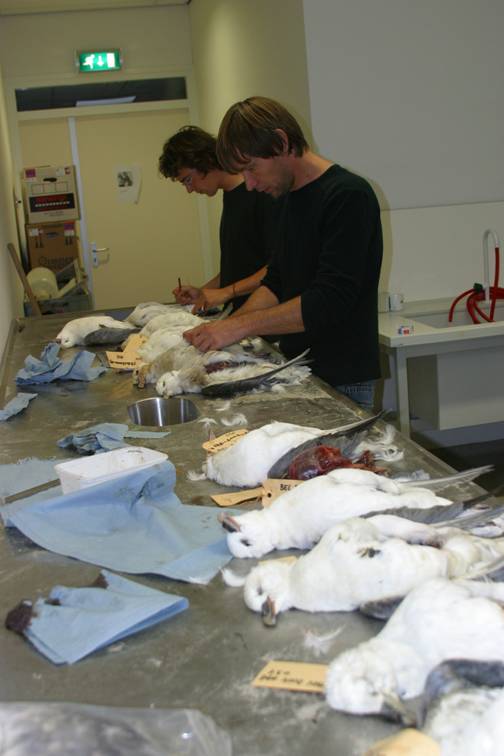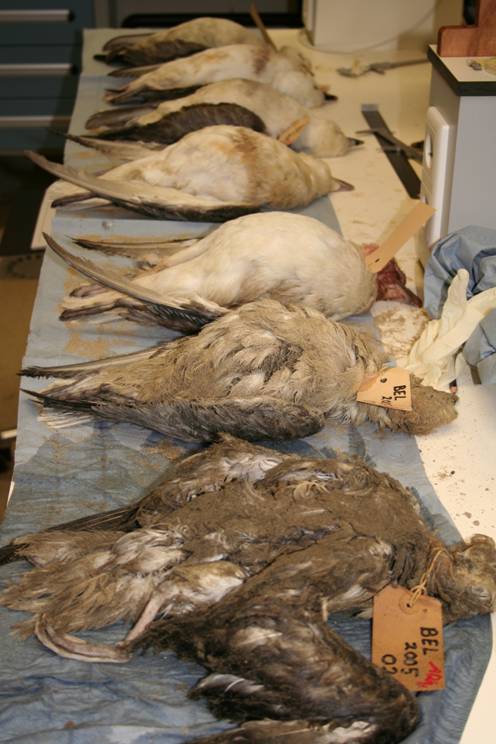Plastics in Fulmar stomachs
Fulmars are known to hold large quantities of plastic particles in their stomach. Within the North Sea an average stomach of a Fulmar contains an amount of plastic equivalent to a bread box full when projected to human proportions. Within the AS-MADE project the stomachs of 174 Fulmars found dead along the Belgian coastline between 2002 and 2006 were analysed. No less than 95% of all collected Fulmars had plastic in their stomach; 94% of the individuals had user plastics (e.g. plastic bags, foil, thread pieces, nylon ropes, parts of polystyrene, fragments of plastic bottles, party balloons and elastics) in their stomach and 56% contained industrial pellets (i.e. small pellets of approximately 0.5 mm in diameter used as a semi-manufactured product in the plastic industry).


The plastic loads found in Fulmars stranded in Belgium are more or less comparable to other parts of the North Sea, although the southern North Sea as a whole seems more polluted than other parts of the North Sea. Our analysis indicates that especially the proportion of industrial plastics found in the Belgian birds is much higher than in other parts of the North Sea.
In order to qualify the North Sea “clean” of plastics, less than 10% of the Fulmars should contain more than 0.1 gram of plastic in their stomachs. This is the Ecological Quality Objective that is proposed to OSPAR to serve as an indicator for a healthy marine ecosystem. Of the birds found in Belgium 51% are above the limit of 0.1 gram of plastic, indicating that we have a long way to go.


